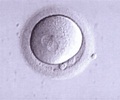To help physicians non-invasively identify women at risk for preterm birth, 3-D ultrasound was used to measure the size of fetal adrenal glands.
To help physicians non-invasively identify women at risk for preterm birth, 3-D ultrasound was used to measure the size of fetal adrenal glands, according to an abstract presented by Yale School of Medicine researchers at the Society for Maternal-Fetal Medicine Conference in San Francisco.
Preterm birth is a major public health problem with lasting repercussions on families and society. The authors found that the ultrasound measurements could identify a preterm risk of delivery within five days of the measurement.'Our results suggest that examining the fetal adrenal gland at the time a woman is evaluated for symptoms of preterm labor, may have major beneficial clinical implications,' said first author Ozhan Turan, postdoctoral fellow in the Department of Obstetrics, Gynecology & Reproductive Sciences at Yale School of Medicine. Turan conducted the study with senior author Catalin Buhimschi, M.D., director of Perinatal Research at Yale Ob/Gyn.
The authors said that understanding the time when a marker becomes positive in relationship to preterm birth is essential for a test with high diagnostic accuracy. 'The high accuracy, sensitivity and specificity of the adrenal gland volume in predicting preterm birth within five days from the time of examination proves that 3-dimensional ultrasound evaluation of the fetal adrenal gland has the desired test characteristics to define a population at risk,' they said.
The current study creates the basis for further prospective studies to confirm that 3-dimensional ultrasound assessment of the fetal adrenal gland volume can assist clinicians with devising better therapeutic and preventive interventions for preterm birth.
Source-YALE University
SRM











